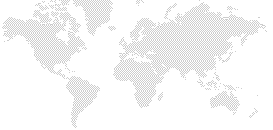|
Intellectual Property Right and General Interest
|
Agri-cultural exemption and WTO
|
||
|
|
|||
| technology transfer in US:
Robert Cook-Deegan BAYH-DOLE ACT
|
June 2007
Scope, Implications Of Section 3(d) Of The Indian Patents Act, 1970 (As
Amended) http://www.ip-watch.org/weblog/index_test.php?p=637
Avril 2007 IP Watch : Ruling on Novartis challenge to WTO rules in India could come early http://www.ip-watch.org/weblog/index.php?p=582&res=1280&print=0
Janvier 2007 MSF : Novartis et la loi indienne sur les brevets : les enjeux du procès (http://www.msf.fr/site/actu.nsf/actus/novartisenjeux100107)
Position de Novartis – Procès pour la reconnaissance de l’innovation Glivec® en Inde (http://www.novartis.fr/pdf_home/Position%20Novartis.pdf)
LE FIGARO - CATHERINE PETITNICOLAS
Changing Patterns of Pharmaceutical Innovation A research report by The National Institute for Health Care Management - Research and Educational Foundation(http://www.nihcm.org/innovations.pdf)
|
" Les brevets ne permettent-ils pas aux compagnies pharmaceutiques
de stimuler l'innovation pour la mise au point de nouveaux médicaments ? extrait : (http://www.msf.fr/site/actu.nsf/actus/novartisenjeux100107)
|
A CONTRACTUALLY RECONSTRUCTED RESEARCH COMMONS FOR SCIENTIFIC DATA IN A HIGHLY PROTECTIONIST INTELLECTUAL PROPERTY ENVIRONMENT J. H. REICHMAN* AND PAUL F. UHLIR |
| CANADA
Centre de recherches pour le développement international (CRDI) |
|||
| AU NOM DE LA
PROPRIÉTÉ INTELLECTUELLE, MENACES SUR INTERNET Offensive insidieuse contre le droit du public à l’information Le Monde Diplomatique |
|||
|
|
|
||
|
DOSSIER X
|
|
||

